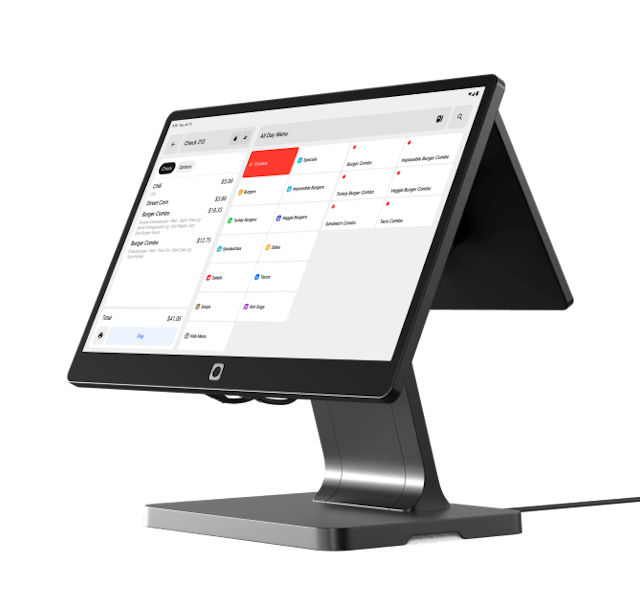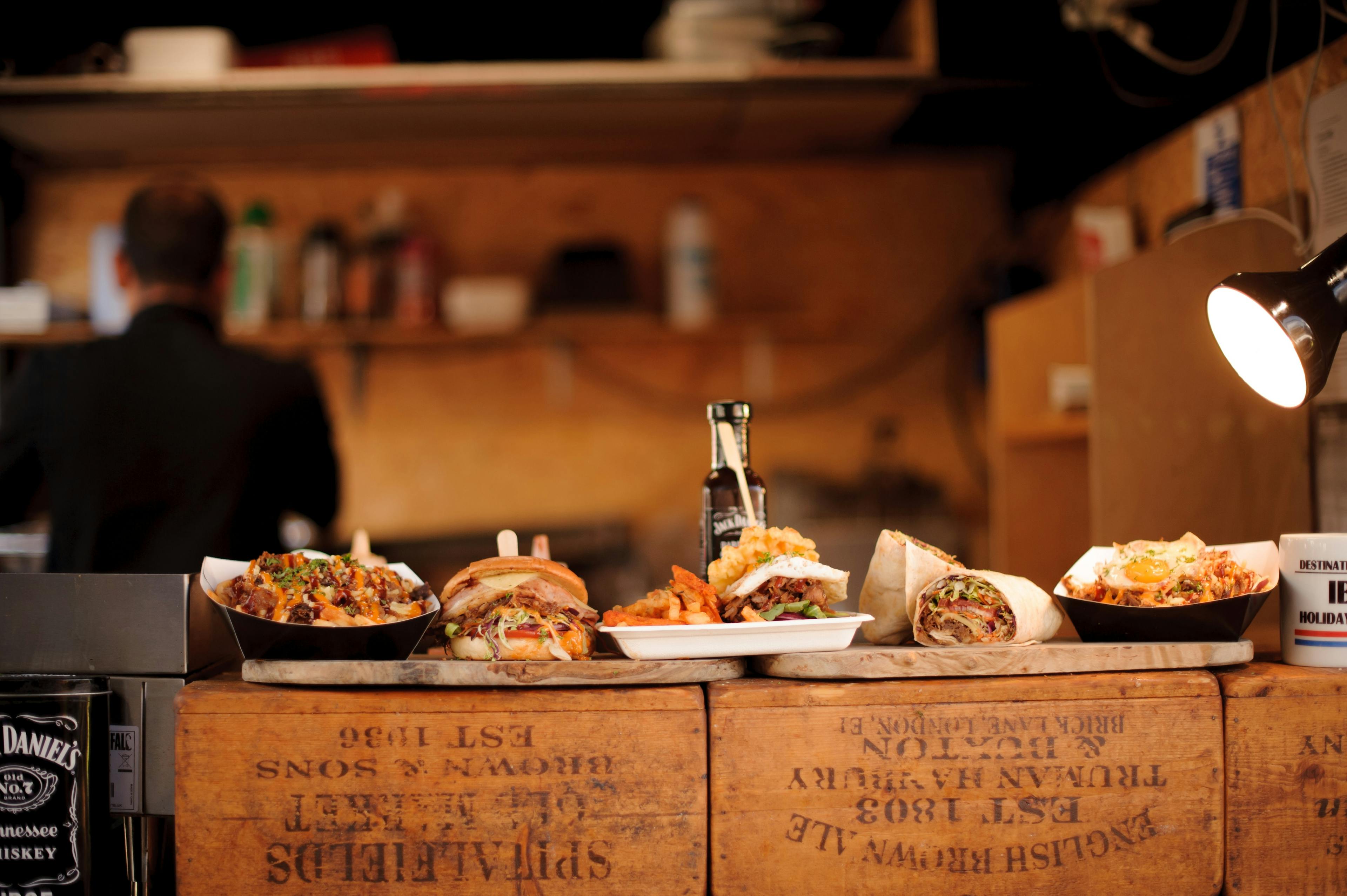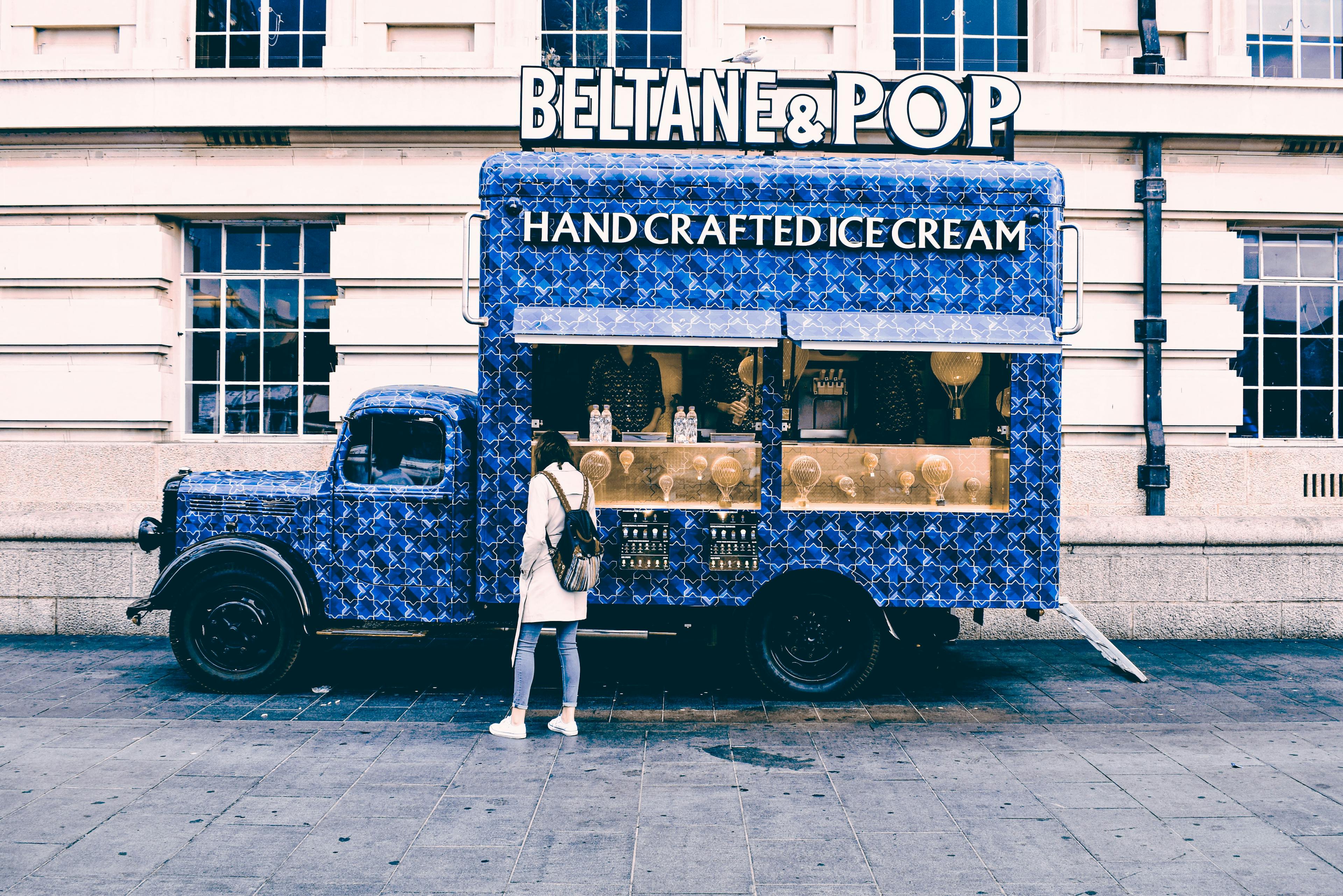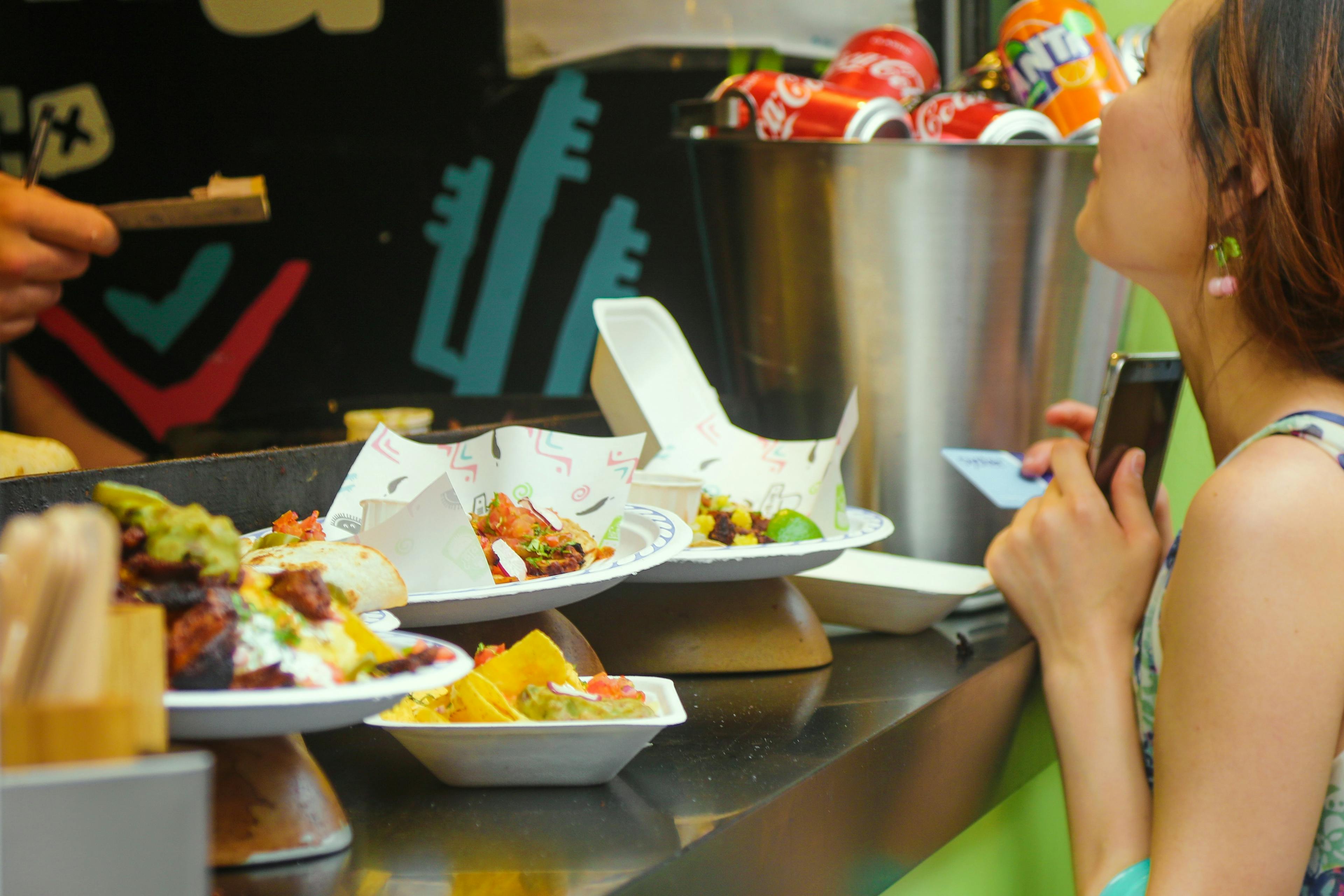
Table of contents
The food truck industry is firing on all cylinders in 2025. New innovations and cutting-edge developments are shifting what it means to serve great food on the go. Whether you're a seasoned operator or just testing the waters of the food truck industry, understanding the latest advancements can be the difference between a line around the block and an empty parking lot.
The U.S. food truck market is now valued at $4.36 billion. According to a 2025 survey by Food Truck Profit, there are over 48,000 trucks serving diverse cuisines across the country. The industry's growth stems from lower operating costs, rising entrepreneurship, and growing consumer preferences for unique dining experiences. With so much competition, how do you stand out amongst the rest? Owners today are embracing new technology and streamlining operations with the help of experts like Otter. Integrative solutions, like our all-in-one POS system, combine online and in-person orders into one platform to maximize every sale and keep you ahead of the competition.
Ready to see what's driving the food truck industry this year? Let's dive into the top 10 food truck trends for 2025.

Otter POS for restaurants
The all-in-one platform that enhances operations across your entire business. Consolidate orders, increase sales, and make your days easier.
Top 10 Trends Food Trucks Are Implementing in 2025

Staying ahead of food truck trends isn’t about winning a popularity contest. It’s about surviving, thriving, and standing out in an ultra-competitive industry. The most successful food truck businesses of 2025 are the ones that pay attention and adapt quickly. They anticipate what customers want, incorporate new technology, and deliver one-of-a-kind experiences.
Are you ready to embrace the top food truck trends of 2025? Warning – integrating the following ten ideas will likely boost your bottom line, attract new diners, and increase your loyal customer base.
1. Tech-driven ordering & payments
Gone are the days of waiting in long lines or fumbling awkwardly for exact change. Today’s customers want their food fast and without a hitch. That’s why modern food trucks are rolling out mobile self-ordering kiosks, QR code menus, and a full suite of contactless payment options like Apple Pay, Google Pay, and Venmo. Innovations like these are drastically reducing wait times while also increasing order accuracy and the average ticket size.
All-in-one online ordering is also making the process easier for both customers and food truck owners. After switching to Otter’s online ordering, Taqueria la Estrella saw a boost in sales and a drop in customer dissatisfaction. “With some companies, I feel like we don’t get our money’s worth, but Online Ordering is really helpful, because we’re using it to grow orders. [Sales are] increasing every day. I’m really happy….With our own direct orders, we never have complaints or issues.”
ONLINE ORDERING CTA
2. AI-Powered dynamic pricing & menu analytics
Artificial intelligence is transforming how food trucks manage pricing and inventory. AI-driven analytics enable real-time menu updates based on high demand, while dynamic pricing automatically adjusts during peak hours or events. This technology helps predict best-sellers and optimal price points, allowing trucks to maximize profit margins and reduce waste by responding instantly to market changes.
MENU MANAGEMENT CTA
3. Sustainable & eco-friendly practices
Sustainability used to be a buzzword. Today, it’s a widespread customer expectation. As far back as 2014, a Nielsen study concluded that consumers are willing to pay more for products or services provided by socially responsible companies that support a social cause. Industry trends show that eco-friendly trucks, like UW–Madison’s Electric Eats, generate positive buzz. Biodegradable packaging and low-to-zero food waste are the restaurant industry’s new normal.
4. Ghost kitchen collaborations
Ghost kitchens and shared commissary spaces are changing the way food trucks prep and serve their offerings. Food truck owners are frequently partnering with cloud kitchens to test new menus and offer food service to more customers without needing to rent an expensive space. When collaborating with a ghost kitchen, such as Otter partner CloudKitchens, it’s essential to incorporate a comprehensive management system. This will help expand your food truck’s reach and streamline delivery operations.
5. Local & hyper-regional ingredients
Food trucks are doubling down on farm-to-table and hyper-local sourcing. This is beneficial for a variety of reasons – it appeals to health-conscious customers, it celebrates regional flavors, and it could be the answer to inflation. If you’re worried about cost increases, don’t be. According to the National Restaurant Association, customers are willing to pay up to 30% more for dishes made with local, seasonal ingredients.
6. Personalized & AI-generated menu recommendations
Food trucks are using AI to create personalized dining experiences at self-ordering kiosks. By analyzing order history and latest trends, the system suggests relevant add-ons, like recommending a seasonal peach cobbler milkshake to customers who've ordered milkshakes before. This smart personalization increases upsells and creates happier customers without requiring owners to manually analyze data patterns.
MENU MANAGEMENT CTA
7. Unique fusion cuisine & experimental flavors
To be successful, modern food trucks must push the boundaries of their offerings with bold fusion concepts and experimental flavors. Consider menu items that repeatedly draw attention – Korean BBQ tacos, Thai basil pasta, sushi burritos. Fusions attract adventurous eaters and generate lots of buzz on social media. Food trucks are the epicenter of experimental cuisine due to their mobility and lower overhead. Chefs can therefore take risks that traditional restaurants cannot, blending flavors and techniques from different cultures. What types of mashups can you create with the ingredients you already have?
8. Food trucks as community hubs
Food trucks are a veritable symbol of community. That’s why 2025 is seeing more trucks hosting live music shows, pop-up markets, and charity events. Many partner with local breweries or mixologists to build brand loyalty and attract like-minded customers. In the past, vendors have reported an increase in revenue when compared to a normal day of operation, showing that community events just might be worth the hype.


Otter POS for restaurants
The all-in-one platform that enhances operations across your entire business. Consolidate orders, increase sales, and make your days easier.
9. Health-conscious & functional food truck offerings
Wellness trends are sweeping the nation, and it seems that everywhere you turn there is a high-protein, low-carb, plant-based, keto, paleo, or gluten-free option available. OpenTable’s 2025 study reveals that almost half of Americans surveyed want healthier options on the menu this year, and just as many want to reduce alcohol consumption. Food truck owners are jumping on this health-conscious bandwagon, buffering their menu offerings with veggie-forward meals and creative mocktails.
10. Social media & TikTok-first marketing
Short-form video content is king in 2025. Top-performers on the food truck scene are dedicating themselves to TikTok,Instagram Reels, and YouTube Shorts to get in front of potential diners. These quick videos are ideal for promoting daily specials, sharing behind-the-scenes moments, and engaging with an audience in real time. Some food trucks run online contests while other film live cooking sessions, leading to an increase in foot traffic and customer loyalty. Augmented reality features and geotargeted ads are also helping trucks connect with customers wherever they happen to be.


Book a demo with Otter
It’s time to enhance your operations with Otter’s all-in-one restaurant platform. Book time with our sales team to learn more.
An overview of the food truck industry
It all started in 1866 with the “chuck wagon.” As Charles Goodnight watched cowboys make their cattle drives across the Texas Panhandle, he wondered if they might be hungry. He started selling preservable items, like sourdough, beans, and canned vegetables. His concept proved successful, further evolving until Oscar Mayer brought the Weinermobile, selling classic hot dogs to the masses in 1936.
Raul Martinez developed what’s commonly considered the first modern-day food truck in 1974. To create his King Taco Mexican food truck, he converted a classic ice cream van. Legend has it, he sold out on his first night in business in Los Angeles, and the food truck industry officially took off.
Los Angeles emerged as the epicenter of the food truck business, partly due to the city’s variety of cuisines and its outdoorsy lifestyle. The concept spread across the country, finding particular success in Austin, New York City, Seattle, Nashville, Tampa, and Washington, D.C.
The modern food truck boom continues to flourish despite current challenges like rising ingredient costs, inflation, and global supply chain disruptions. These pressures, combined with increasing competition and complex licensing and permitting processes, require owners to be more resourceful than ever.
Regardless, opportunity abounds through:
- AI-driven inventory management: Point-of-sale and order management systems track inventory in real-time, updating menus to reflect availability.
- Ordering integration tools: Online ordering systems funnel sales into one platform, no matter their origin. This cuts administration time and streamlines staff duties.
- Digital marketing automation: Food trucks are turning to AI-powered marketing tools that optimize ad campaigns to increase sales and attract new customers.
- New revenue streams: The rise in ghost kitchens allow for cost-saving delivery-only models, while catering opportunities drive profits. Brand partnerships, whether virtual or local, are giving way to lucrative community events.
From the humble chuck wagon to tech-powered mobile kitchens, the food truck industry has proven itself to be nothing less than resilient and creative. While challenges like inflation and regulatory complexity persist, food trucks continue to adapt, innovate, and capture the public’s imagination, proving they remain a compelling business model this year and beyond.
What does the future look like for modern food trucks?
The food truck industry is on the brink of its most exciting era yet! As technologies continue developing at a rate never before seen, creative business models are actively reinventing how and where we eat. From eco-friendly trucks to digital-first customer experiences, here’s what the future of modern food trucks is projected to look like:
More electric and solar-powered trucks
With the increase in affordable technology and regulations cracking down on the environmentally unconscious, more food trucks are predicted to adopt clean energy vehicles.
More advanced uses of AI and AR
Artificial intelligence and augmented reality are set to completely transform the way we do everything, especially when it comes to ordering food. Fully autonomous ordering, predictive menu engineering, and immersive digital experiences are expected to become the norm.
Integration of food trucks into smart city ecosystems
As cities increase access to power stations and digital permitting platforms, food truck businesses will integrate more seamlessly with citywide smart systems.
Opportunities for new venues and events
Cities are actively expanding new food truck zones, partnerships with event spaces, and pop-up parks to increase access and visibility.
Expansion of virtual brands and ghost kitchens
Food trucks may start shifting to digital-first platforms in greater numbers, perhaps leading to a decrease in physical establishments.
Of course, all of these are predictions. Only time will tell what’s to come. What we do know is that those food truck operators who adopt new technologies are more likely to be a part of the industry’s expected growth, marked at a CAGR of 6.3% through 2030 (Grand View Research).
FAQs
How much does it cost to start a food truck in 2025?
Startup costs for a food truck in 2025 typically range from $50,000 to $150,000, depending on key factors like location, kitchen equipment, permits, and branding. Whether you buy a new or used vehicle is also a major factor in upfront cost. Ongoing expenses such as fuel, inventory, maintenance, and insurance should also be considered when developing a budget.
What are the best locations for a food truck?
Food trucks thrive in high-foot-traffic areas like festivals, office parks, breweries, college campuses, and downtown districts. To further boost visibility and sales, participate regularly in local events and pop-ups.
How can food trucks market themselves effectively?
Successful food trucks leverage social media platforms like TikTok and Instagram, maintain an up-to-date Google business profile, and build partnerships within their communities. Engaging content, real-time location updates, and influencer collaborations can also attract and retain customers.
What regulations do food trucks need to follow?
Food truck operators must comply with local licensing requirements, zoning laws, and health and safety regulations. Separate permits are generally required for each city or county of operation. Keep a watchful eye on changing regulations to ensure ongoing success.
How does Otter help food trucks manage their business?
Otter provides centralized order management, AI-driven marketing solutions, real-time inventory tracking, and detailed sales analytics, all designed to streamline operations and help food trucks grow their business efficiently.
What are the top food truck trends for 2025 and beyond?
Key trends include the rise of AI-powered management systems, plant-based and eco-friendly menus, cashless and contactless payments, enhanced digital engagement, collaborations with local businesses, and sourcing hyper-local ingredients.
Are food trucks still a viable business in 2025?
Absolutely. The global food truck market is projected to grow by $3.88 billion USD (Straights Research), driven by consumer demand for convenience, diverse cuisine, and innovative dining experiences. With the right strategy and adaptability, food trucks remain a promising business opportunity.

Book a demo to see how Otter’s all-in-one platform can help your restaurant thrive.